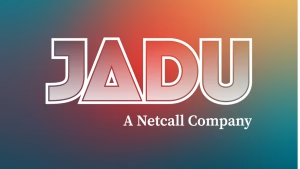By Natalia Vasilyeva,VP Marketing at in-game advertising company Anzu.io.
In-game advertising is picking up speed, and for good reason. Gaming has evolved into a worldwide phenomenon. 3+ billion people around the world from all walks of life are playing games–a lot of games. According to emarketer, 86% of internet users have gamed on at least one device within the past month. At the same time, more and more game studios are adding a new monetization channel using blended In-game Advertising (IGA), a relatively new form of advertising in which brand ads are naturally placed on in-game objects such as billboards, walls, jerseys, and more, in non-intrusive, yet highly viewable, ways. Clearly, this move is a win-win for the advertising and game development industries.
But the question remains: Is this a medium that’s here to stay? Much of that depends on the opinions of the gamers themselves — the movers, shakers, and true end users behind this exploding new media channel. To get an insider’s view into the gamer perspective, we spoke to several active gamers around the world. Let’s see what they have to say.
Ads in Games: Pop-ups, interstitials, rewarded ads, and more
Advertising has existed in video games since day one, albeit in very different formats. These include pop-ups, the notoriously disruptive ads that gamers – and many professional game studios – have longtime resented. There are also rewarded ads, which provide an in-game incentive for viewing the ad, interstitials, which cover the entire face of the game (rather than just part of the screen as pop-ups do), and others.

Gamers are used to ads of all sorts appearing during gameplay, whether on mobile, PC, or console games. The gamer Raging Golden Eagle (initially contacted on Discord) could immediately identify which kinds of ads he had experienced in video games before, “either popups or ones you watch to get a reward. I also see the occasional product placement,” he said. These are all ad formats traditionally associated with gaming.
Another gamer, RY4NDY (initially contacted on Reddit) focused on the disruptive nature of ads that showed up “at annoying moments, such as just after having completed a level, and sometimes even a pop-up ad in the middle of gameplay, which then often leads to failing the level since you’re busy watching the ad.”

Lastly, the avid racing gamer Steakilicious touched on in-game sponsorships, “racing games are filled to the brim with track advertisements and car and team sponsorships, which are fashioned to recreate iconic cars from the past or cars in the present because that’s the job of a simulator. Brands and sponsorships aren’t in place for monetary means but for novelty, realism and authenticity.” In this case, Steakilicious touches on am important point–many, many games have long included some form of blended ads in their gameplay, but not in order to monetize. These types of ads, which in many cases use fake brands created to imitate their real-life counterparts, were placed purely to add realism to the game.

Through the massive adoption of pop-up blockers, gamers as a group have made it clear that disruptive formats are not welcomed. Historically, there has not been a scalable solution for non-disruptive advertising in games that was readily accepted by all parties involved–advertisers, game developers, and gamers.
All of these factors–an exponentially growing gamer audience, interruptive formats, lack of scalable measurement solutions, ad blockers, and more, have pushed the industry to do better. The time has come for a new type of advertising in games, one that’s more effective, measurable, and less intrusive than anything that’s existed before.
In-Game Advertising: 2020 and beyond
In-game advertising (IGA), a term that specifically refers to ads blended naturally into the gaming environment, has exploded in recent years for a number of reasons. The first has to do with the growth of gaming itself. Covid-19, a major blow to many industries, has actually accelerated gaming at an unprecedented pace. According to Statista, this past April, the U.S. video game industry surpassed its record for the month – dating back to 2008 – after seeing sales spike 73 percent compared to the previous year. This is not so surprising. As people continue to face limitations on work, travel, studying, and socializing in public, gaming provides a much-welcomed refuge while facilitating sustained social interaction. Consequently, advertisers naturally shift budgets as they search for new channels that communicate effectively with end users. The move in-game is no exception.

Concurrently, video game studios are on the hunt for sustainable revenue streams that don’t disrupt the gamer’s experience and don’t put the financial burden on the gamer. New and developing technologies such as programmatic in-game advertising, ad viewability measurement, and brand lift measurement all add up to a ripe environment for IGA expansion in the market.
But let’s get back to the gamers. How do they feel about this new type of blended IGA?
The gamer SynRapture (initially contacted on Reddit) made it clear that “if they [the blended ads] make sense with the game (let’s say the Jeep logo in the Juventus shirt in a Soccer game), I think it adds realism, so I’m 100% ok with that.” Raging Golden Eagle agreed with SynRapture’s sentiment, but with the caveat that certain gaming categories should remain off limit for all types of ads, “As long as the blended ads fit with the game it’s fine. If the game was based in modern times, I’d actually prefer to see real Pepsi ads to those obvious Pepsi knockoffs. But if it’s a fantasy game or something, I’d be annoyed to see that.”
Gamers also recognize that game studios need to monetize, preferably not by adding or increasing fees for gamers. SynRapture thinks IGA is a good solution for game monetization, “Making games is a huge endeavour and in-game ads help indie developers and small studios to keep supporting games and creating additional content.”
Raging Golden Eagle, however, is nervous about some of the moves he’s seen publishers take over the years, “They keep raising prices, adding more microtransactions and loot boxes, and now ads on top of that. Another fear I have is that gaming will end up like YouTube if they become too dependent on ads. Advertisers would throw fits about what content their ads show up in, and games would be forced to censor.”
It’s important to also mention that more and more games are moving to the free-to-play model (think the iconic Fortnite), which means that game developers will be forced to choose other ways of monetizing their games and maintaining stable revenues that don’t involve charging for their games (at least not on the basic level). IGA is one good solution.

Keeping the Gamers at the Forefront
IGA is quickly becoming counted among the mainstream digital advertising channels, especially with the introduction of programmatic and other digital advertising standards. To what degree providers will succeed in creating truly seamless brand experiences inside video games is as yet, undetermined. The technology is simply evolving at such a rapid pace.
But one thing is crystal clear: as brands move into the in-game space and as game developers begin to partner with more brands, the gamer experience needs to be kept at the forefront. The brand suitability, the game genre, and the game setting (we don’t want to see Gilette ads in a medieval game!), the burden on the gamer, and other considerations will all need to be taken into account in order to assure ads are truly appropriate. If that precious connection between the gamer and the game can be preserved, the potential of IGA is limitless.
As to whether or not IGA will ultimately be accepted – and embraced – by gamers, another gamer, Venian (contacted on Reddit), summed up his positive – but cautious – point of view, “if developers are freer financially so that they can concentrate on free updates for the community instead of begging for subscriptions, it [IGA] is a well-welcomed feature.”










